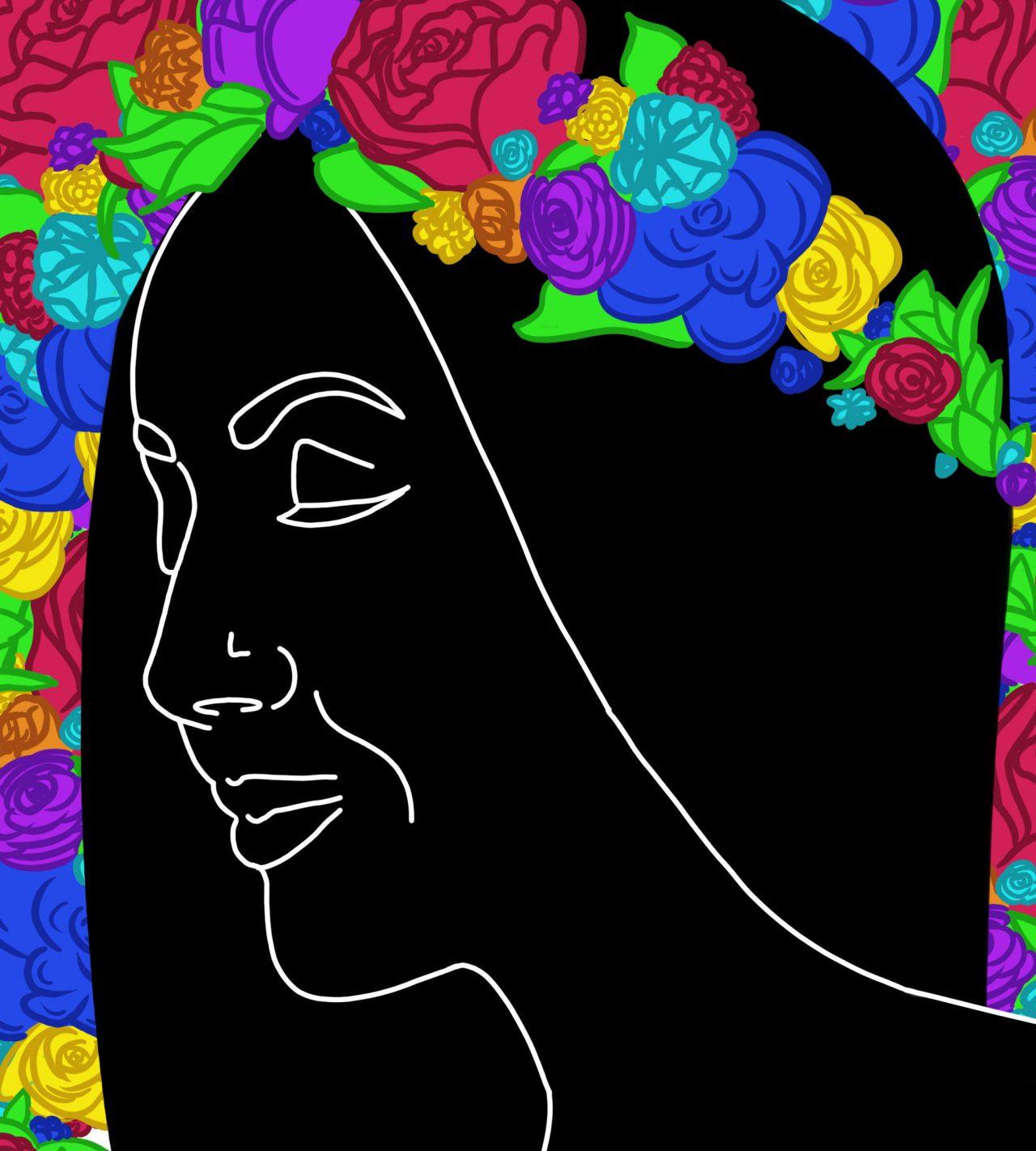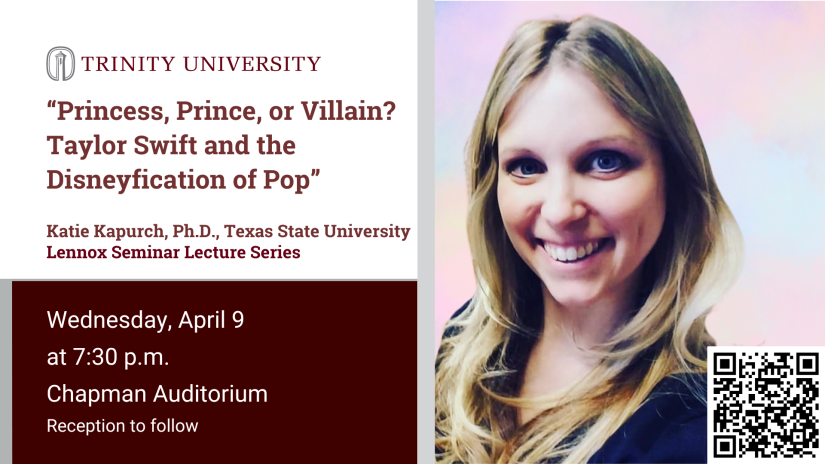Illustration by Andrea Nebhut
One of San Antonio’s most famous traditions, Fiesta, is coming up soon with its annual festive floats, street vendors and crowded celebrations — and with it can come questions about cultural appropriation.
Cultural appropriation (I think the phrase cultural exploitation is more specific and apt, sometimes) is when a group of people with power misuses another’s cultural symbols and iconography while the original group is still mistreated and exploited because of it.
With an event like Fiesta, I think we need to look beyond surface disagreements about cultural (mis)appropriation and look at the celebration’s history. On one hand, Fiesta is a citywide celebration that everyone is allowed to participate in (entry and event fees notwithstanding), and the money raised from the celebration goes to a diverse array of nonprofits.
However, the iconography of Fiesta does have a lot of Mexican-American components — even going to the Fiesta San Antonio official website will bring up pictures of flower crowns, mariachi, Folklorico dancers and cascarones.
Personally (although people can disagree), I think that tourists and non-Latinx people can participate in Fiesta celebrations, wear flower crowns, etc. because of the touristy nature of the event as long as they’re not being blatantly disrespectful (this means that taking tacky pictures with your friends in sombreros is off-limits).
I think when we look at the history of what Fiesta represents, however, there’s something bigger at work than just cultural appropriation — a term that, while useful, I think is overused and tends to elide questions of structural racism.
Fiesta was created in 1891 by a group of San Antonio women (soldiers’ wives) to honor the soldiers who fought in the battles of the Alamo and San Jacinto. Similar to how Texas education about the Civil War often forgets that the war was fought over slavery, the Battle of the Alamo and the Revolution of Texas were also in part fought over slavery.
The white Texas colonists wanted to keep slaves after Mexico had abolished slavery in 1829, and Stephen F. Austin (often called the “Father of Texas”) advocated for slavery as well as outright arguing for the “extermination” of many indigenous tribes such as the Karankawa.
When the first Fiesta celebrations appeared, they were a way to glorify this violent settler-colonial history by the white women who benefited from this sanitization of the Alamo.
As Laura Elizabeth Ehrisman argues in her book, “Inventing the Fiesta City: Heritage and Performance in San Antonio’s Public Culture,” Fiesta was created as an exercise in cultural appropriation by Anglo and German Texan women, many who were part of the still-extant San Antonio Conservation Society (SACS): “Through the language of cultural conservation, the SACS, unlike previous voluntary associations, articulated a local form of the Spanish heritage fantasy. Restoring the mission buildings, hosting tamale dinners and dressing in elaborate Mexican dresses, these women exemplified the modern search for authenticity through the elevation of ‘the primitive.’”
The practice of Fiesta royalty was also intertwined with classism: where elite, wealthy San Antonians — some of whom were white though others were Mexican or Latinx — separated themselves from the working-class, black and brown “subjects.”
One of the fascinating paradoxes that Ehrisman goes over in her book is that, through the decades, the Mexican/Latinx community and LGBTQ+ community has gained power in Fiesta, for example with parodic rituals such as El Rey Feo and Cornyation.
However, Fiesta still remains a consumerist event in many ways, and its history hasn’t been reckoned with publicly despite protests from Chicanx activists in the 90s and 2000s (and documentaries such as “Puro Party: Celebrating a Genocide,” made in 1992).
Overall, I agree with the sentiments expressed in Kayla Padilla’s wonderful article last year about cultural appropriation: “When we stop getting told to go back to Mexico, when a Mexican child or person never has to worry about hate crimes or getting killed, then — and only then — can you can wear our traditional, beautiful and culturally significant Mexican dresses.”
I don’t think that we need to stop celebrating Fiesta necessarily, but I do think that we need to critically analyze what it represents. Particularly in this instance, if you want to participate in — and this message goes to everyone, including me, who benefits from the settler-colonialist history of Fiesta — you should raise awareness for the struggles that Native people and particularly indigenous Mexicans have faced in San Antonio and in Texas for centuries. You can do this by educating yourself about indigenous peoples (San Antonio was originally occupied by the Tonkawa tribe, who were driven to Oklahoma by the U.S. government during the Trail of Tears) and artists, reading books like “Inventing the Fiesta City” that expand more on Fiesta’s nuanced history and by recognizing the historic atrocities that Fiesta was originally meant to celebrate.









None of your business • Sep 13, 2019 at 9:49 am
You do realize not just white people fought for Texas independence??? Puro Pinche Tejano!!! Viva Fiesta!
Sarah Jo'on Yeoung • Apr 27, 2019 at 7:04 pm
Boohoo the evil white men are gonna start eating tacos on your precious holiday. Give me a break
Noelle Barrera • Apr 30, 2019 at 6:48 pm
I don’t care about Fiesta, honestly. Also, did you even read this article? That isn’t at all what I meant.
MARA ESQUIVEL • Apr 12, 2019 at 2:38 pm
Can you share Kayla Padilla’s article? I can’t seem to find it anywhere! thanks!
Noelle Barrera • Apr 14, 2019 at 2:48 pm
Yeah sure! https://www.trinitonian.com/fashion-or-cultural-appropriation/ She probably said this better than I could, tbh